
10 perennial plants for calcareous soil
Discover plants best suited to this type of terrain.
Contents
In the garden, calcareous soils (pH above 7) are not only a disadvantage: retaining less water, they are drier and warm up more quickly in spring. The main difficulty is choosing suitable plants. Indeed, many plants do not tolerate calcareous ground well. When planted in unsuitable conditions, they develop chlorosis. Leaves turn yellow between the veins, because the lime present in the soil blocks absorption of minerals, causing a nutrient deficiency.
To avoid this phenomenon, only one solution : choose calcicolous perennial plants, which thrive in calcareous soil. Discover our selection!
Bellflower
Bellflowers are delightful plants that offer campanulate flowering in blue, mauve or white, composed of five-lobed flowers. They have a light, natural, delicate appearance. On calcareous soil, we particularly recommend growing clustered bellflower, Campanula glomerata. It produces flowers gathered in glomerules, borne atop erect stems reaching up to 50–60 cm in height. It will integrate easily into naturalistic, wild or country-style gardens.
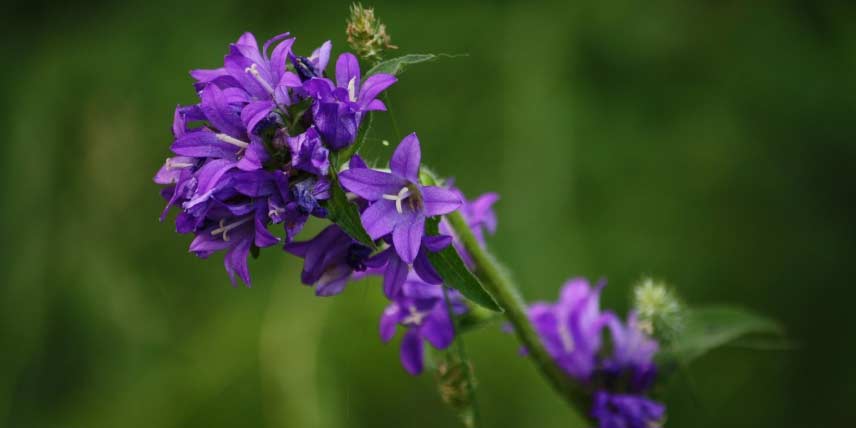
Campanula glomerata (photo Anneli Salo)
Acanthus
Acanthus, or Acanthus mollis, is a majestic perennial bearing superb, broad, glossy dark-green leaves. Leaves are beautifully deeply divided. In summer, Acanthus also bears very tall, erect flower spikes, majestic, composed of white and purple flowers. It is a vigorous plant that grows quickly and is fairly easy to grow. It thrives in sun or partial shade and tolerates drought well. Acanthus spinosus is another interesting species with thorny, very deeply divided leaves.
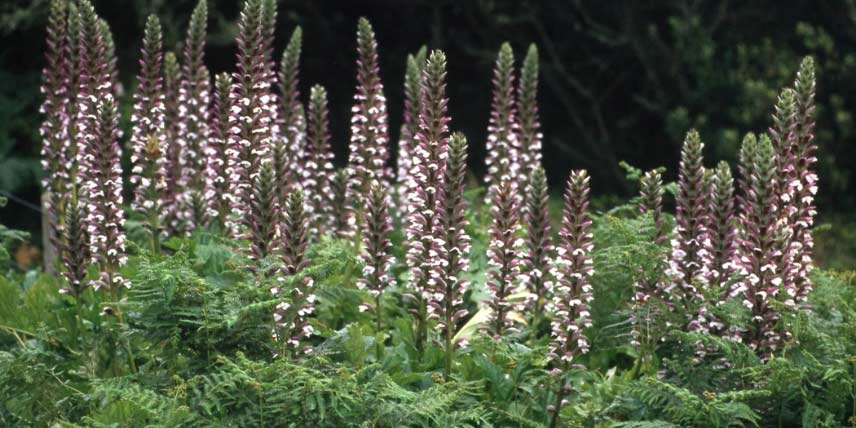
Acanthus mollis (photo Dr Mary Gillham Archive Project)
Discover other Campanula - Bell Flower
View all →Available in 0 sizes
Available in 0 sizes
Available in 0 sizes
Available in 0 sizes
Available in 1 sizes
Available in 2 sizes
Available in 2 sizes
Available in 1 sizes
Available in 0 sizes
Available in 1 sizes
Aubrieta
Aubrieta is a small groundcover plant that in spring is covered with a multitude of pink, mauve or white flowers. Its leaves are evergreen, and therefore remain decorative in winter. They are usually green, but there are also varieties with variegated foliage. Aubrieta is a plant that remains very low, not exceeding 15 cm in height. It is ideal for bringing lots of colour to borders, rockeries or low walls. We recommend planting it in full sun, in fairly poor, well-drained soil.
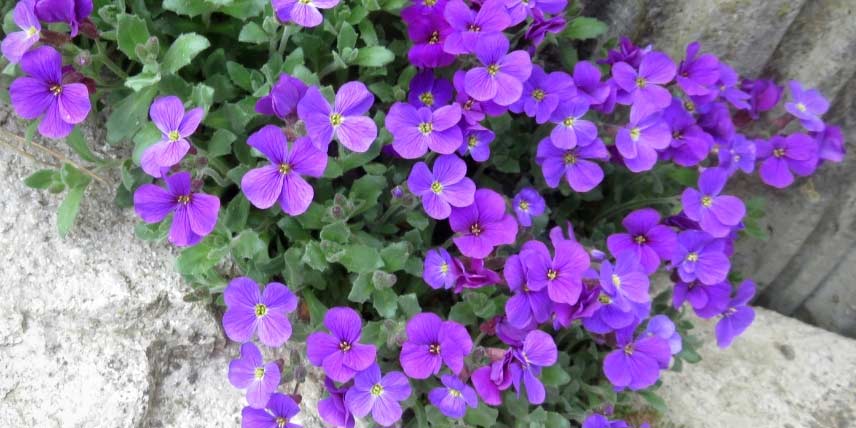
Aubrieta ‘Royal Violet’ (photo: Alex Hauner)
Read also
Calcareous soil: which bushes to choose?Centaureas
Centaureas are beautiful perennials that prefer calcareous soils and produce very attractive flowers, usually blue, violet or purple. We particularly recommend Mountain centaury, Centaurea montana. Flowers are grouped into heads, with long petals divided into five lobes, giving a laciniate appearance. Some centaureas stand out for their unusual colour, such as the variety ‘Black Sprite’, with flowers almost black! Overall, centaurea has a very natural, delicate habit and is perfect for integrating into a wild or country-style garden. It tolerates poor, dry soils fairly well.
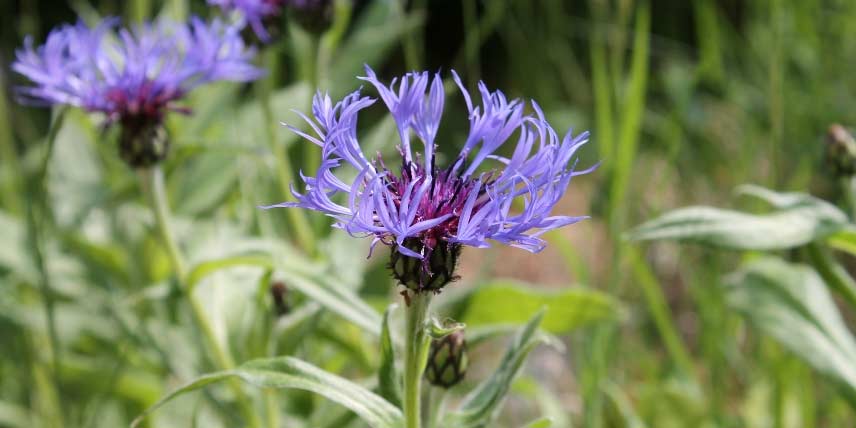
Centaurea montana (photo Bernt Fransson)
Sage
Sage thrives in well-drained, often calcareous soil in full sun. This is especially true of common sage, Salvia officinalis, notable for its downy, grey-green, evergreen leaves. Leaves are aromatic and have many medicinal properties. Some sages have variegated foliage, such as the ‘Tricolor’ variety. Flowers of common sage, arranged in spikes, are a soft mauve colour. You can also choose ornamental sages, which generally provide beautiful, colourful flowering. Discover in particular the Salvia nemorosa, with violet flowers, the Salvia guaranitica ‘Black and Blue’, with electric blue flowers, and Salvia elegans, with red flowers. They are fairly hardy and easy to grow.
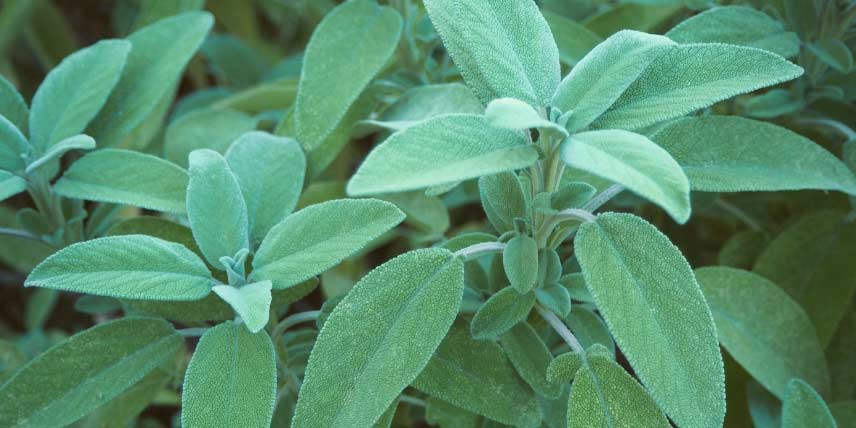
Salvia officinalis (photo Teresa Grau Ros)
Lavender
Lavender thrives in full sun and in poor, well-drained, rather calcareous soil – except, however, for butterfly lavender, Lavandula stoechas, which prefers acidic soil. In gardens mainly true lavender, Lavandula angustifolia, is grown, prized for its blue-mauve flower spikes and for its fragrance. It is emblematic of Provence and of southern Mediterranean gardens. Its flowers have the advantage of being melliferous, attracting pollinators. It also has attractive silver evergreen foliage. To maintain a compact, rounded habit, it is important to prune it each year after flowering.
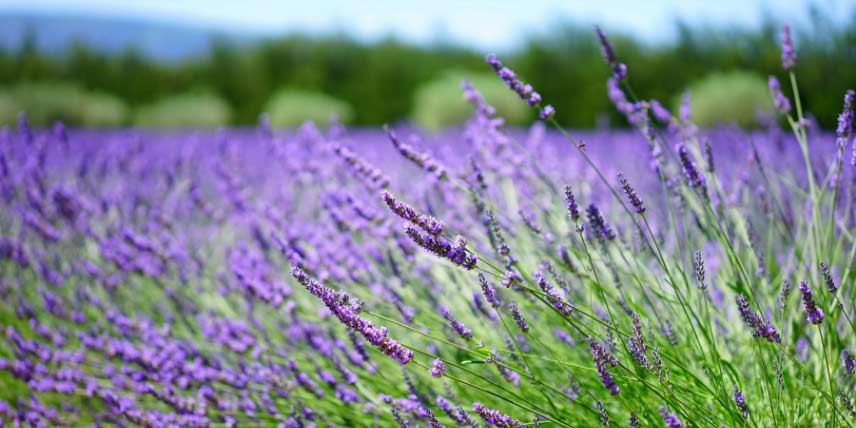
Lavandula angustifolia
Yarrow
Yarrow also favours calcareous soil. This attractive perennial bears flowers gathered in flattened corymbs in summer and has very finely divided foliage. The type species (as found in the wild) produces a superb white flowering, but many varieties offer different shades: yellow, orange, red, pink, mauve… Yarrow brings a very natural feel to the garden. Its inflorescences can also be used to create stunning bouquets. And it is also a medicinal plant! It thrives in full sun, on dry, poor soils. Once established, yarrow can spread on its own and self-seed.
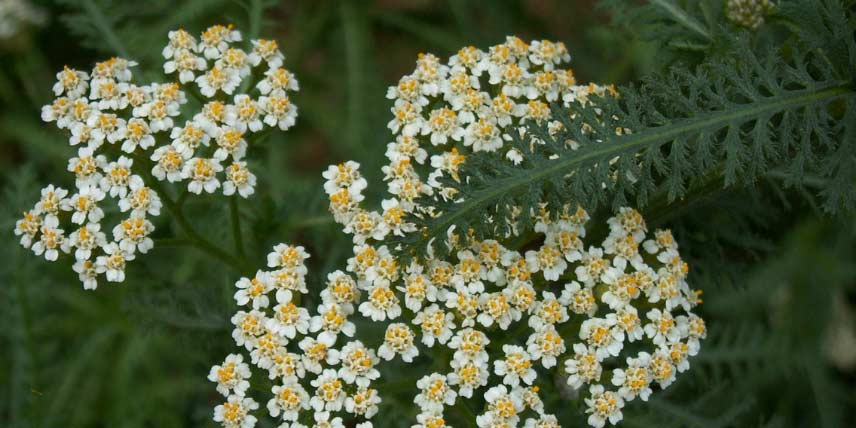
Achillea millefolium (photo Lorenzarius)
Carnations
Pinks offer delightful colourful, scented flowers, which can be single or double. There are many species and varieties, which thrive in full sun and free-draining soil. They also make excellent cut flowers for bouquets. In the garden, on calcareous soil, we particularly recommend the maiden pink, Dianthus deltoides, which produces pretty small single flowers with a rather natural appearance. The cottage pink (Dianthus plumarius), by contrast, bears delicate flowers whose petal tips are fringed, dentate. Dianthus carthusianorum is also valued for its superb flowering, with a delicate, very natural style. You can grow these different Dianthus species in borders or rockeries. There are also annual species, such as sweet William, Dianthus barbatus.
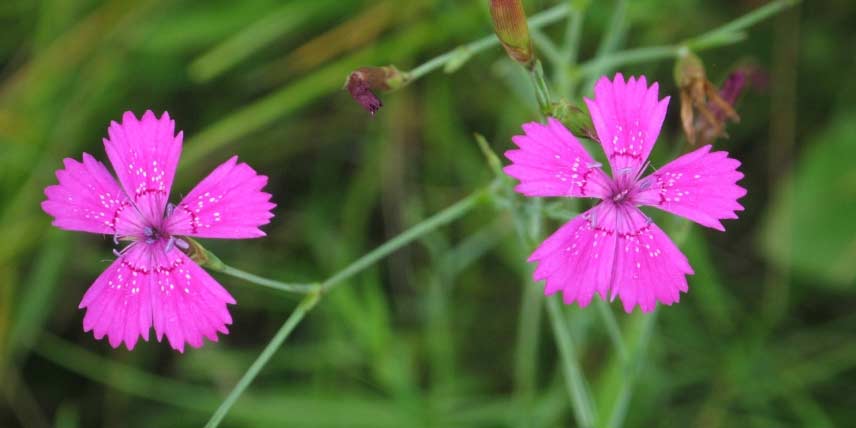
Dianthus deltoides (photo Robert Flogaus-Faust)
Inula helenium
Elecampane is an imposing perennial that can reach up to two metres in height. It flowers in summer and then bears large heads, resembling daisy flowers but in golden-yellow. You can plant it at the back of a border, behind smaller plants. It thrives in sun or partial shade, in fresh, fertile soil. It is a particularly hardy and vigorous plant, requiring very little attention. Moreover, it has an edible, medicinal root!
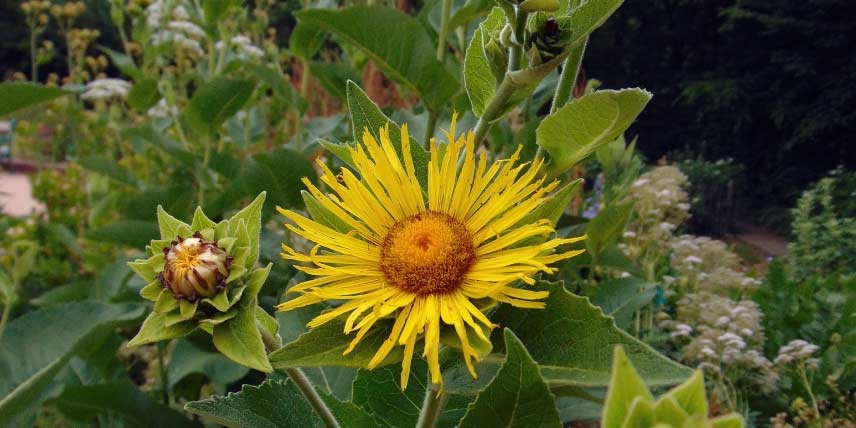
Inula helenium
Astrantia
Astrantia is a charming mountain plant, which favours clay‑limestone soils that are relatively cool and fertile, and partly shaded positions. It produces extremely delicate flowering in summer, in silvery‑white to pink tones. Its flowers are gathered in small umbels, and are surrounded by star‑arranged bracts, very decorative. Leaves are palmate and dark green. They are deciduous. Astrantia can be incorporated into an English‑style garden, a romantic garden or a naturalistic garden.
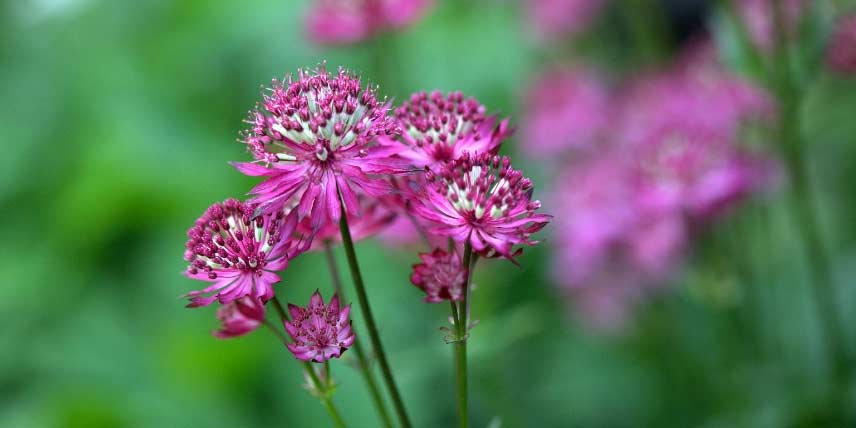
Astrantia major ‘Ruby Wedding’ (photo by Averater)
- Subscribe!
- Contents
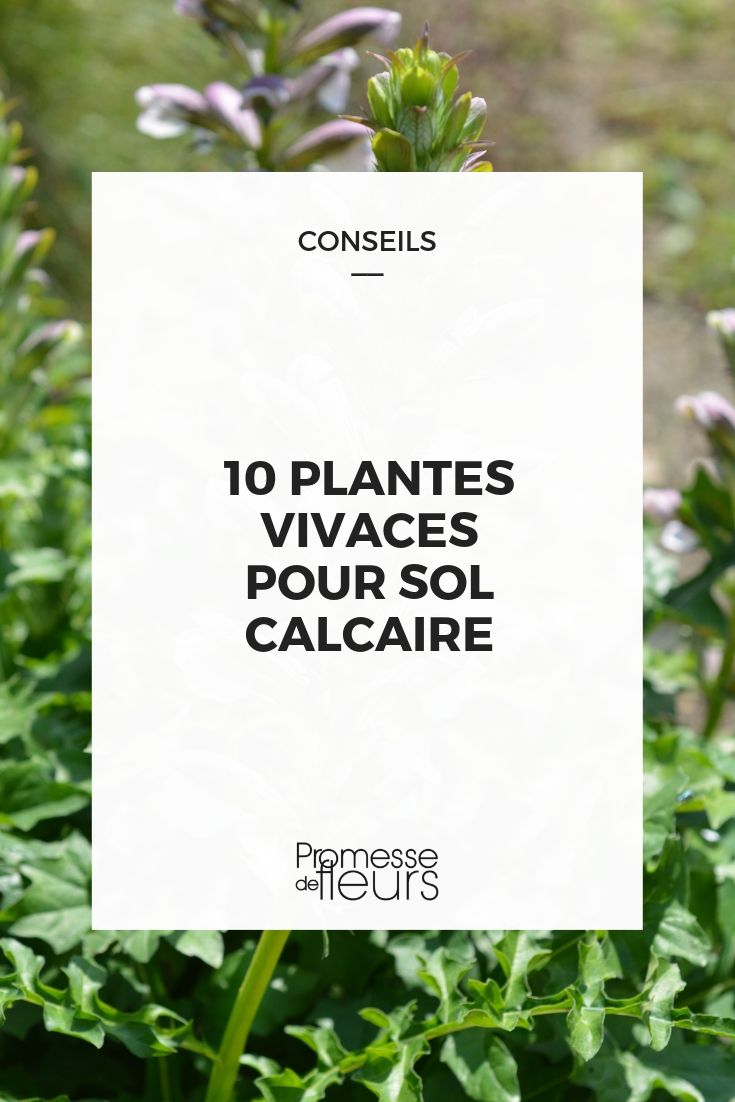































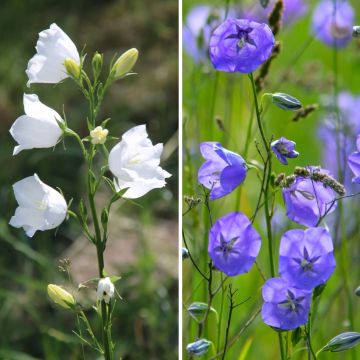
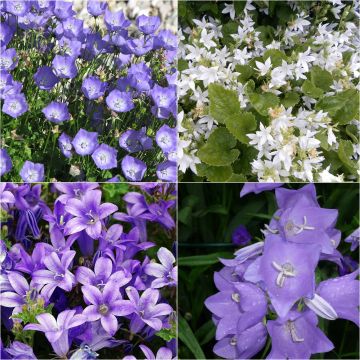
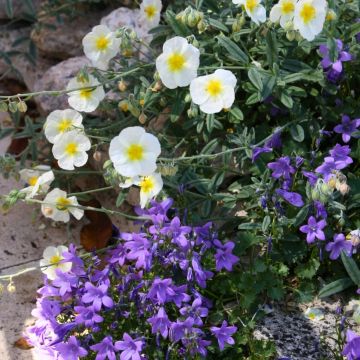
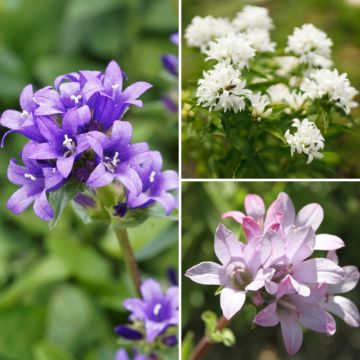
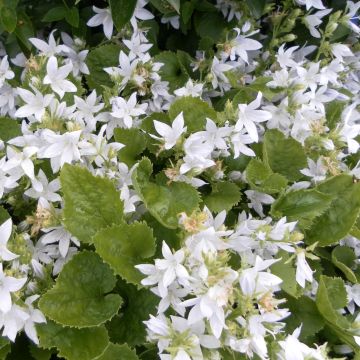

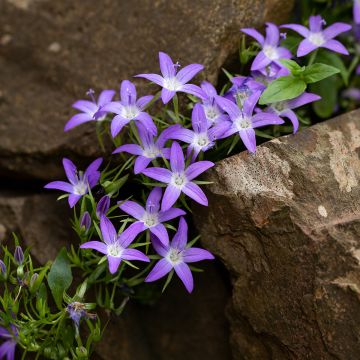
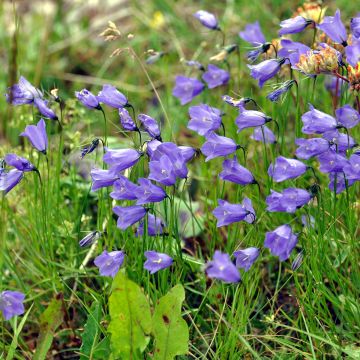
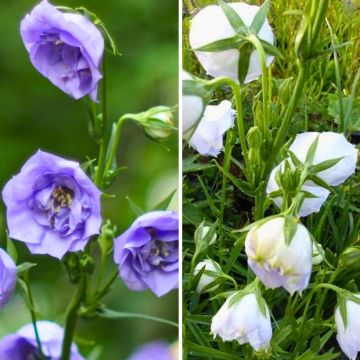
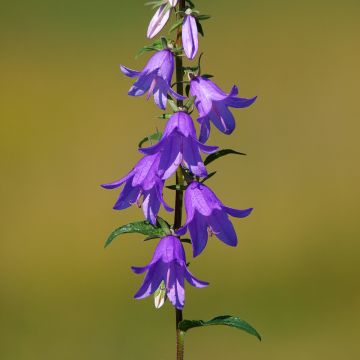
Comments